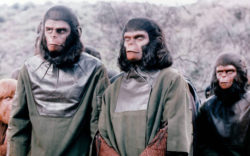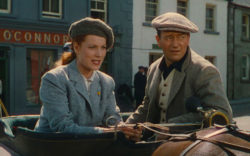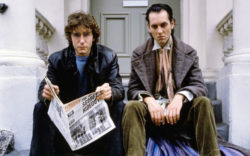Meeting new people can be awkward. To sidestep the cinematic equivalent of this awkwardness, two contemporary films use montages that rapidly deliver the need-to-know details about major characters with visuals and voiceover. Jean-Pierre Jeunet’s French quirkfest Amélie—playing on Apr. 20 at Ciné as a part of the arthouse theater’s 10th anniversary celebration—uses this method to immerse the audience in characters and rhythms of contemporary Parisian life. Director Mike Mills (not the R.E.M. bassist) offers an English-language spin on the device with his coming-of-age story 20th Century Women.
Go Out and Watch
AMÉLIE (2001) In Paris’ Montmartre district, waitress Amélie Poulain (Audrey Tatou) moves out of step with her colleagues and neighbors, lacking significant emotional connections. After she discovers a box of toys hidden in her apartment and returns it anonymously to its grateful owner, Amélie becomes a covert do-gooder for the people of her neighborhood.
Jeunet has a speedy, kinetic style, embodied in his camera’s active involvement with the proceedings. Tatou plays Amélie as barely suppressing a grin, her tightly pursed mouth rippling with amusement. Her grin is most often shared directly with the camera; a successful first contact with her object of affection ends with Tatou pointing her smiling face in the direction of the viewer. The viewer becomes a co-conspirator in the waitress’ plans to spread joy and happiness, which fosters investment in the proceedings.
The aforementioned montages, while a noble effort in sidestepping the dullness that can come with character introductions, ultimately undermine this resonance. Quick shots coupled with the voice of an omniscient narrator introduce us to characters’ interests, likes, dislikes and general demeanor. In the montage introducing Amélie’s father, for instance, the narrator informs us that he dislikes clingy swim trunks as he exits a pool and fusses with his shorts. When we are told that Mr. Poulain enjoys emptying his tool box, cleaning it and putting everything back together, you better believe that we are about to see each part of that process in detail. The director attempts a crash course on each character but denies them the nuance that would make these fictional constructs feel like actual human beings. By reducing characters to a handful of bullet points, they never amount to more than a sum of their quirks.
Rewatching this film, I was reminded of the recent T2 Trainspotting. Danny Boyle’s 2017 follow-up to the 1996 Trainspotting also boasts excessive visual style that at times builds momentum in a way that engages the viewer. However, Boyle leans on gimmicks to the film’s detriment. When a character uses hand motions while talking about forgery, for instance, the film gains nothing from adding a glowing CGI trail following his imaginary pen strokes. After suffering through Boyle’s attempt to grasp the success of his youth, I wished that, in the planning stages, he had heard the old saying, “Just because you can do something, it doesn’t mean you should.”
With its insistence on foregrounding visual tricks that do little in service of the narrative, Jeunet and Amélie could have benefitted from the same advice.
Stay Home and Watch
20TH CENTURY WOMEN (2016) For bold artistic flourishes that actually bolster a narrative, look no further than Mike Mills’ instant classic 20th Century Women. In 1979, Dorothea Fields (Annette Bening) is the single mother of 15-year-old Jamie (Lucas Jade Zumann), who suffers the pangs of unrequited love for neighbor Julie (Elle Fanning). Dorothea rents rooms in her dilapidated Santa Barbara mansion to photographer Abbie (Greta Gerwig) and easygoing mechanic William (Billy Crudup). Worried that Jamie’s lack of a father figure will impede his growth, Dorothea asks Abbie, Julie and William to play parts in ensuring that Jamie learns how to become a man.
Much like Mills’ previous film, Beginners, montages deliver character-related exposition in expedient packages; these montages steep characters in gravitas instead of simply drafting a rough outline of a person like in Amélie. When Jamie narrates the story of his mother’s life, we see stock footage of World War II biplanes flying as he mentions her childhood interest in becoming a pilot. Stills of New York City in 1973 likewise accompany the portions of Abbie’s story from her metropolitan college years. Julie’s tale is peppered with excerpts of Judy Blume and M. Scott Peck that shaped her outlook. Mills’ use of stock photography and popular literature augments these segments by firmly grounding these individuals in a sense of history. The characters become more true to life through their association with true life.
This pack of California oddballs coalesce into a community in a way that the people of Montmartre never quite do. Dorothea, Jamie, Julie, Abbie and William are three-dimensional humans on their own paths, passing, colliding and uniting along the way. Thanks to Mills giving these characters life and history, their romantic pairings, medical emergencies and frequent group dinners are riveting before a gesture is made or a word is uttered.
Like what you just read? Support Flagpole by making a donation today. Every dollar you give helps fund our ongoing mission to provide Athens with quality, independent journalism.










